The interior uses the principle of live plants in their natural form. Plants have a positive impact on psyche and human health. Each green nature maintains a balance and creates the antithesis of modern technologies in interiors.
Daily view to the interior
Live plant located on the wall behind the TV is the dominance of the space during the day. At night this role is taken by lighting scenarios, where you can with one button change the character of lighting of the entire apartment. The user has an option to choose the intensisty of light that imitate daylight, halogen mood light, or color LED lighting.
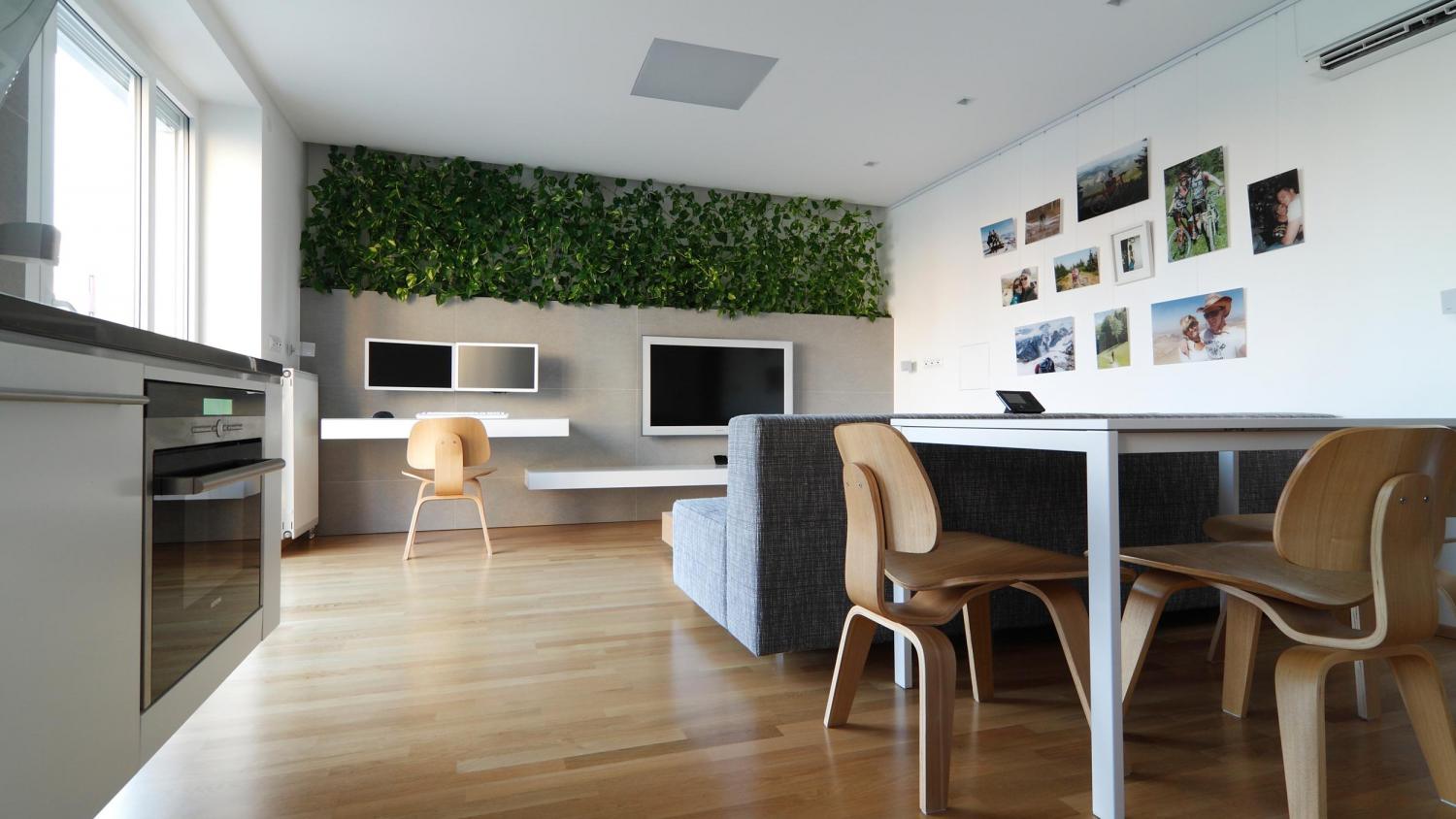
Live plant on the wall
This green plant is alive and thanks to large spread space of the foliage it releases the water to the space. It mitigates the negative effects of air-conditioning which dries the air. Plant with its green color brings to the interior space a piece of living nature and it makes a natural counterpart to the electric equipment and technology used in the interior.
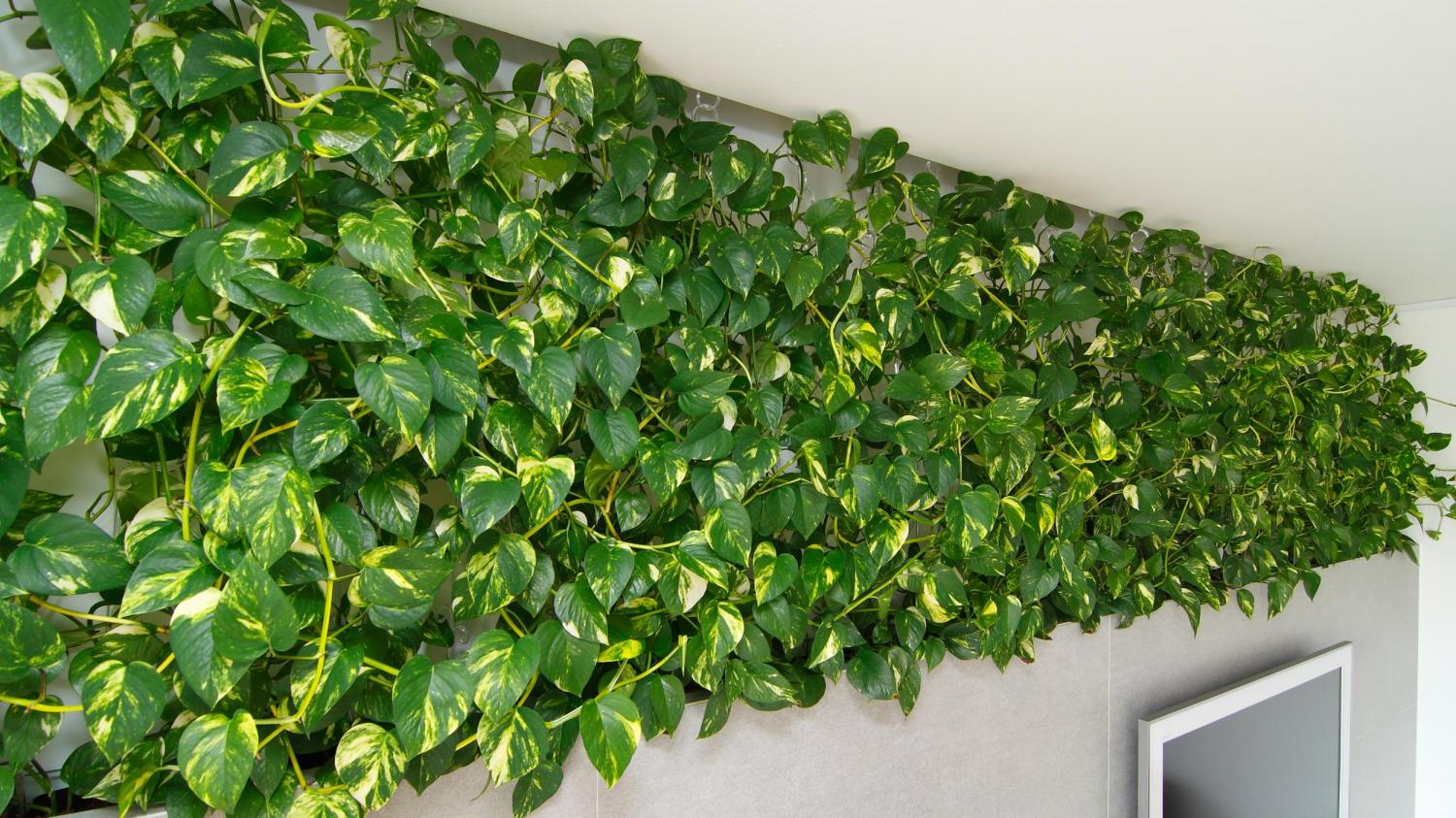
project: Luxury apartment reconstruction, Bratislava, Slovakia
Sitting area in the living room with a natural spirit
The living room set consists of a big comfortable seating group with grey upholstery. A standing lamp next to the seating group may resemble a hairdressing salon, but it provides pleasant and cosy light. Robust pieces of cedar wood serve as handy tables. Natural character is emphasized by a plant on the wall behind the seating group. The hydroponic plant requires no special care.

Living green wall behind the seating group
Hydroponic pots with natural plants were inserted into the wall behind the seating group and within one year they overgrew the entire wall and now they control the design of the living room. During the day they humidify the air, absorb dust and improve acoustics. In the evening when illuminated by spotlights the plants shine and seem to be artificial.

project: Three bedroom maisonette, Bratislava, Slovakia
Walnut veneer
The basic material of component, lacquered walnut veneer, we chose based on the work tables used in the office. Since the reception and offices are one space, usie of different material could act disturbing.
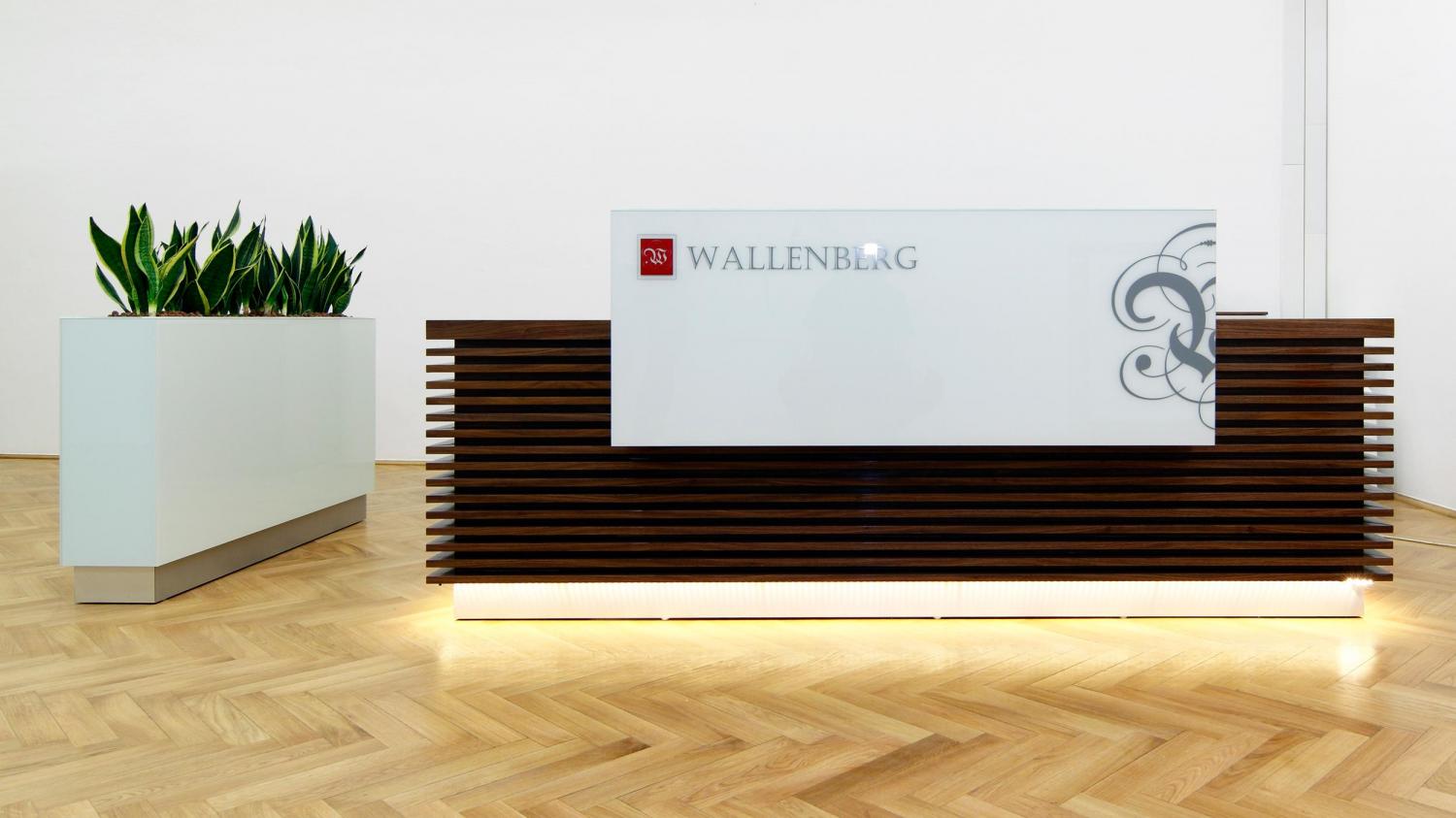
Decent combination of materials
The starting material of the reception, lacquered walnut veneer, nicely contrasts with white lacobel, black chairs and stainless steel handles. Colors are refreshed with green color of plants.
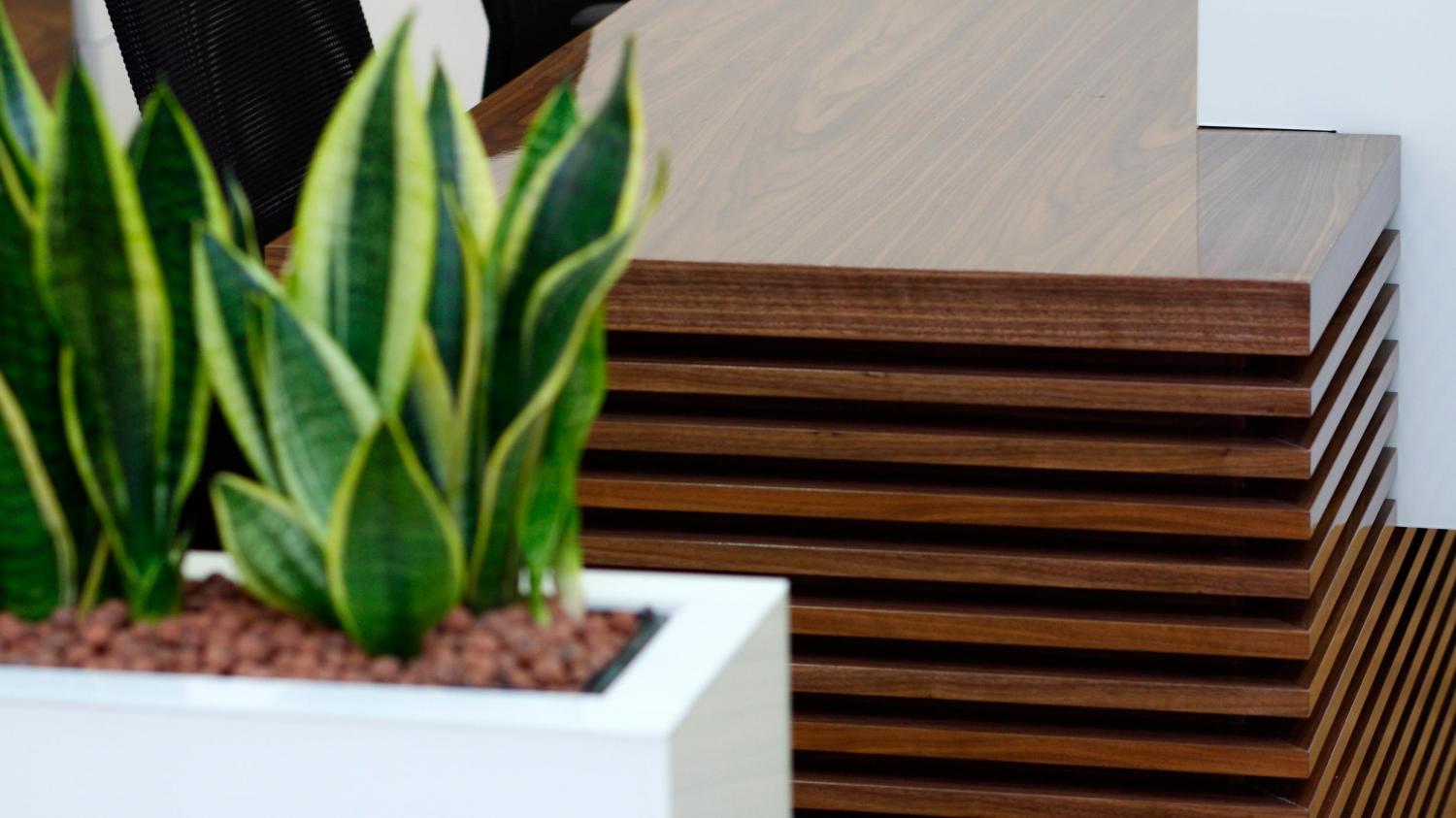
project: Reception Wallenberg, Bratislava, Slovakia
TV cabinet with a live plant
We embed the black panel of the TV cabinet to one level with TV screen, so when it is turned off it merges with the cabinet. We built in also front speakers into the cabinet of a home cinema. There are hydroponic planters with live plant in the extended white part of TV cabinet.

Live hydroponic plant in the cabinet under the TV
We chose the live plant into the interior near Danube river as opposite to the electrical installations in the apartment, which produce electromagnetic smog. We placed the plant into the hydroponic pots and we hid them into the extension of lower television cabinet. This plant requires a minimal care, so it is perfect also to an apartment for rent.

project: Apartment furnishing Eurovea, Bratislava, Slovakia
Visual connection of the living room and foyer
The living room was designed as optically linked with the foyer, so it looks as one unit. The multifunctional cabinet in the living functions like a workplace, bar, pot for the hydroponic plants and tv cabinet. The multifunctional cabinet fluently changes into a bench seating with the same cushioning as a corner sofa in the living room.
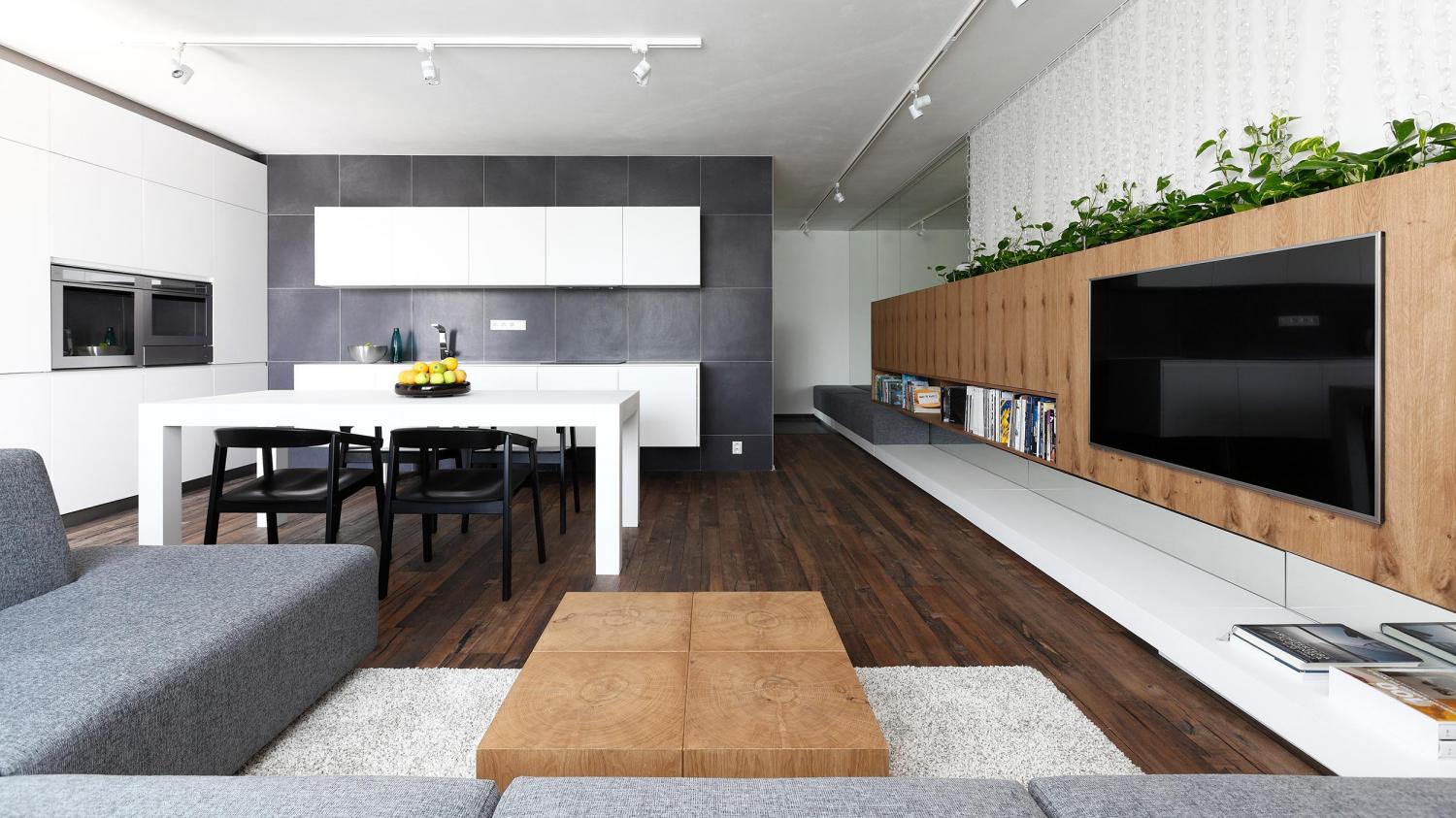
Hidden pots for the hydroponic plants
The TV cabinet assambly is custom made and includes the pots for the hydroponic plants. Growing hydroponic plants in apartments is very convenient because there is no soil needed, therefore there will not be a problem with insects living in soil. Thanks to the custom made design of the cabinet assembly the TV is almost in the cabinet´s surface.

project: Interior design of a living room with a kitchen and dining room, Bratislava, Slovakia
Positive impact of green
Psychological well-being - plants bring to the artificial environment a piece of living nature, which contributes to the well-being of residents. We design plants into interiors as a natural contrast to the technical achievements of modern times producing electromagnetic smog . Therefore the postitive effect of green plants is important especially in an office environment full of computers. Green helps employees to focus their attention and increases working comfort.
Human health - live plants improve indoor air quality, which has a positive impact on human health
Humidity - technical equipment of buildings such as air conditioning or heat recovery units of controlled ventilation reduce air humidity. In the winter months occurs a problem with dry air in all indoor heated rooms. Hydroponic plants moisturize it more than other types, because the majority of water intended for watering returned back into the environment.
Room air purity - plants metabolism helps break down harmful substances from the environment, reduce dust in air.
Space acoustics - natural plants because of a large area and segmentation of leaves can dampen noise of environment and to improve the acoustic properties of space. Especially in modern interiors with a minimum of furniture, where can appear undesirable echo,when listening the music for example, plants can limit this effect.
Advantages of hydroponic cultivation
Easy manipulation - since hydroponic plants do not live in the soil, but in a special substrate - expanded clay, during the planting and handling you do not come into an contact with a dirty soil, but with a clean substrate.
Easy care - hydroponic plants are alive and therefore require some care. Thanks to a clearly understood system with a level gauge, you can see when and how much water should a plant receive.
Purity during cultivation - since the plants do not contain soil, it does not provide fertile ground for various flies, moths and other insects, which tends to accumulate in plants grown normally.
Basic elements of hydroponic system
Outer waterproof water container (planter). In the case of free-standing planter it is the planter itself. If we propose plants as part of the furniture and interior elements, watertight container is usually invisible, because it is located in the furniture. Then we replace the outer container with a glass container constructed according to the dimensions of furniture that resembles an aquarium.
Inner container for expanded clay is a container in which is the plant planted. For simplicity, we place a number of internal watering containers into the outer one.
Water gauge meter - shows water level in the outer container. One watertight container (which may contain one or more inner containers) need one level gauge. Dimensions of the level gauge is chosen according to the amount of the outer container.
Expanded clay aggregate - internal substrate to which the hydroponic plants root. They are small brown balls which soak the water during watering and then gradually released into the root system of plants. Compared to a conventional method of growing plants in soil, expanded clay has am advantage of being " clean ", insects do not appear and fly off.
Conditions for cultivation of hydroponic plants
Sizing of the outer and inner containers. The inner container must be sufficient to develop the root system of the plant. The inner container should exactly set into the external dimensions of watertight container so the gaps prevent from evaporation of water. In our proposals we suggest dimensions of the outer container as big as possible in order to reduce the number of places where you need to add water.
Watering - described below
Fertilization - on the market are available more types of fertilizers with different requirements on the interval of fertilization. It is usual to apply solid fertilizers once in a long time, for instance, once a year. We add liquid fertilizers into the grout during the growing season.
Light and heat requirements - plants should not be placed in locations with direct sunlight during the whole day and even in the dark corners. With the correct design, certain kinds of plants can live well even at the greater distances from the windows. Draft is harmful to the plants, the room temperature should not exceed the long term 30°C and minimum 15°C.
Air humidity - high humidity reduces the metabolism of plants to stop producing nutrients and gradually die out.
Watering of hydroponic plants
Hydroponic plant should be watered after a slight drying of the substrate (expanded clay), i.e. in the outer container when there is no water. Generally 2-3 days after the level gauge has dropped to zero.
We pour enough water to the plant, so the level gauge reach an optimal value at the moment watering. Several hours after the watering expanded clay saturate water and therefore water gauge slightly decreases, we do not pur more water.
The frequency of watering is related to the size of the system - plants, planters, season. We design plants into the interiors so, that we water them once every two - three weeks.
A common mistake when watering hydroponic plant is extreme watering - water filling after every fall of the level gauge. Plant roots are always in water and may molder. We pour water into the system after gentle drying of the substrate - 2-3 days after the level gauge has dropped to zero.
When designing interiors, we do provide design solutions and realizations with plants from the project. Photos: Dano Veselský










